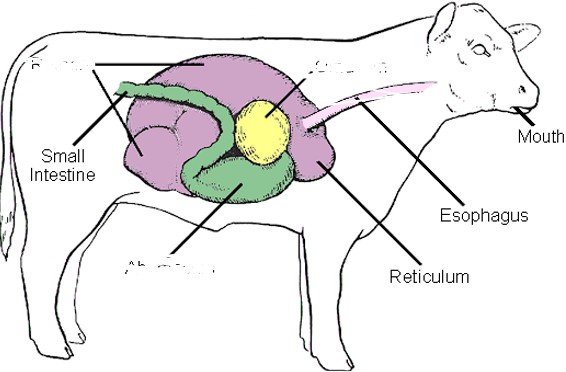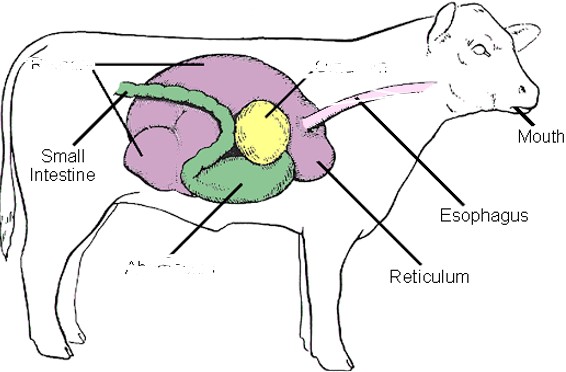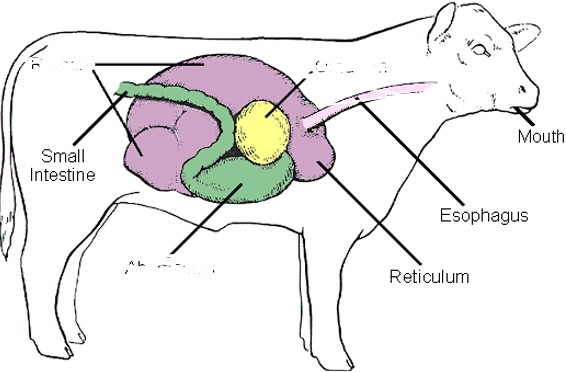Lecture 09 Vertebrate Gut Symbioses
1/53
There's no tags or description
Looks like no tags are added yet.
Name | Mastery | Learn | Test | Matching | Spaced |
|---|
No study sessions yet.
54 Terms
The symbionts of vertebrate guts are typically …
heterotrophic microbes
most symbioses are ________, but important members are ___ _________ at least
transient, semi perminent
Most vertebrate gut symbioses are ____-cellular
extra
Most vertebrate gut symbioses are obligate/ facultative and unculturable/culturabe
obligate, culturable
what are typical gut symbiosis features of the host
provides habitat and steady stream of unprocessed food ( host as habitat )
typical gut symbiosis features of the symbiont community
possesses pathways to metabolize food (source of metabolic innovation)
what hosts contain cellulose-degrading symbionts?
herbivorous vertebrates, wood-eating insects, shipworms (a marine bivalve mollusc)
Why would animals have celluose-degrading symbionts?
hosts lack enzymes to degrade complex polysaccharides
define syntrophy
metabolic interdependece
What is the metabolic premise ?
symbionts hydrolyze polysaccharides into simple sugars
other symbionts ferment sugars anaerobically into volatile fatty acids
Host absorbs the volatile fatty acids, using them as fuel for aerobic respiration
Symbionts contribute to hosts _______ budget by ?
nitrogen; recycling host N wastes or fixing N into proteins and amino acids some sy
some symbionts produce _________ to help maintain the anaerobic environment of the guy
methane
foregut fermenters include:
ruminant, colobine monkeys, sloth, macropod marsuipials, hoatzin.
hindgut fermenters include:
Cecal fermenters- rabbits and hares, some rodents, grouse, some reptiles
hindgut fermenters- equids, some rodents, humans, some reptiles
foregut symbioses evolved _____________ in just ___ mammals and one strange bird
independently, 4
hindgut symbioses have a wide/ narrow taxonomic range
wide
The hindgut has a _______ pH and is largely enzymatic/nonenzymatic. Why?
neutral, nonenzymatic; because it functions in absorption of water/ ions, not digestion of material
What are the 4 orders of mammalian foregut symbioses?
marsupiala - kangaroos
primatia - colobus monkey
edentata - sloths
artiodactyla - hippos, camels, ruminants
What is the bird that has a foregut symbiosis?
Opisthocomos hoazin
diet is 80% leaves
What are the common characteristics of foregut symbioses?
in herbivores with diet rich in plant structural polysaccharides
foregut = enlarged, up to 30% bodyweight
foregut has multiple chambers
part of foregut is anaerobic and contains dense bacterial population
pH close to neutral, maintained by bicarbonate rich saliva
high concentration of VFAs (main products of anaerobic fermentation of sugars)
ruminants all have _________ symbioses
foregut
the common ancestors of ruminants featured a _______, which was an enlarged foregut for fermentation
rumen

what is indicated in purple and what does it do?
rumen and reticulum- symbionts occur and are active here. This is also the site of some VFA absorption

what is labelled in yellow and what does it do?
omasum- takes up VFAs and bicarbonate

what is labelled in green and what does it do?
abomasum - the true stomach that performs acidic digestion
what is a cow’s chewing cud?
where they repeatedly chew food, swallow, vomit, shew, swallow again
why do cows perform chewing cud?
adds saliva and bicarbonate to food, which breaks down food into smaller particles
what is the pathway order in the cow’s system?
mouth > rumen > repeat > omasum > abomasum
the rumen is largely _________
anaerobic
what are the layers of the rumen?
top- gases
middle- fluid of today’s hay
bottom- fluid of yesterday’s hay
why are there multiple layers in the rumen?
as new material comes in, anaerobic fermentation can continue because low O2 concentrations are maintained with high CO2 and methane concentrations
what is the fluid that food lands in to be digested?
liquor- contains symbionts
small amounts of O2 are removed by __________ anaerobes in the rumen
facultative
in the rumen, facultative means the capacity to…
perform both aerobic and anaerobic respiration
VFAs are absorbed across the ________ ____
rumen wall
gas phase of the rumen is ????
CO2 and methane
what are characteristics of obligate anaerobic eubacteria?
die if O2 present
some degrade complex plant material
some ferment only starch/simple sugars
some specialize in glycerol fermentation
several metabolize and deanimate proteins
methanogens are what type of eubacteria ?
obligate anaerobes
what are characteristics of methanogens
produce methane from H2 and host food
result in net loss of 10% energy intake
H2 removal from system favors important reactions though
methanogenic ectosymbionts scrub H2 off of anaerobic ciliates
What are characteristics of facultative anaerobic bacteria?
can respire if O2 present, but switch to fermentation in its absence
some degrade urea (important for nitrogen cycling)
others degrade material using reactions that require oxygen
keep O2 levels down
Protozoa are mostly _____
ciliates
characteristics of protozoa as gut symbionts?
responsible for 30-60% fermentation
Not essential
obligate anaerobes, many specific to rumen
perform phagocytosis of particles of plant material and break down to simple sugars/ VFAs
phagocytosis of bacteria as a source of nitrogen
methanogens associated with their cell surface to remove H2
characteristics of fungi as gut symbionts
produce cellulases
good at breaking down lignin-rich plant cell walls
which microbes are responsible for cellulose degrading ?
eubacteria, ciliates/protozoans, fungi
which microbes are responsible for fermentation?
eubacteria and ciliates/protozoans
which microbes are responsible for nitrogen metabolism ?
eubacteria
which microbes are responsible for methane production?
archaea, eubacteria
What is the carbon budget?
since ruminant diet is almost entirely carbs, symbionts break them down to monosaccharides. They perform glycolysis to form pyruvate, in which the pyruvate synthesizes VFA’s via fermentation. VFAs absorbed and used in metabolism
what is the nitrogen budget?
ruminant diet is nitrogen poor, so the symbiosis conserves or recycles nitrogen. Symbionts break down organic nitrogen proteins to NH4, and use it in their amino acid synthesis that are absent in the food being consumed. There are also urea metabolizers that can produce NH4 for amino acid synthesis. The host digests 30% of symbionts (because it doesn’t absorb nitrogen until the stomach) and derives a mixture of amino acids from them which ludes the essential amino acids it can’t synthesize itself.
how do rumen symbionts transmit?
horizontally; the juvenile gut lacks the digestive symbionts, and it firsts gains ones that help it break down milk. Then, cellulase-degrading bacteria/protists are obtained when a mother licks her calf or from airborne saliva that have the symbionts
What are the animals that are considered hindgut fermenters?
humans/primates
horses/rhinos/tapirs
manatees
rabbits
rodents
koalas/wombats/opossums
birds
iguanas/turtles
hindgut symbioses are similar to foregut symbioses with what exception?
where the digestion/absorption is taking place
a caecum or a colon may be used in hindgut fermentation, both are what kind of environment?
anaerobic
what is coprophagy? why do animals do it?
eating your own poop; since symbionts are found after the stomach, host cannot digest them easily, so the fecal matter is re-ingested and this aids in nutrient cycling. it is also a method of symbiont transmission (horizontally)